|
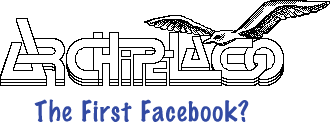 Today I would probably describe Archipelago as a social networking service. It was a personal computer-based system that allowed about a dozen members to regularly post short updates and whimsical observations. Each member had his or her own profile picture which appeared next to timestamped postings which contained pictures, sounds, and hyperlinks. All pretty standard except for one thing: the year was 1988. In 1988 there was no such thing as the world wide web, and most people had never heard of the internet. Text-based "bulletin boards" like The Well had begun to cater to a few pioneers, but ordinary people were just starting to acquire personal computers and didn't yet have the modems required to connect one computer to another. Information was stored on diskettes that held maybe 800k - one millionth the capacity of a modern hard drive. On-screen images were colorless and so cramped (less than .2 megapixels) that photos like this one (from Archipelago's startup animation) completely filled the screen:
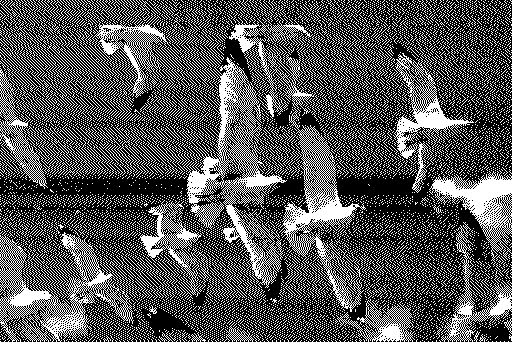 So how could you operate a Facebook-like service under these conditions? Easy. Just assemble a quarterly volume of postings on two or three diskettes, make a dozen copies, put them in manilla envelopes, slap on some postage stamps, and mail 'em!
The software behind Archipelago evolved over time. It was originally intended to support a broad range of activities including libraries of shared sounds, poetry, quotations, book reviews, and code snippets, tools to create notes and essays with embedded text links (an innovation at the time), a survey and voting apparatus, archives of past contributions, a shared address book, and various curiosities like the "Desert Island Quiz" and a regular tutorial called "Mr. Wizard". All of this was displayed in an interface intentionally designed to resemble a Monopoly Board.
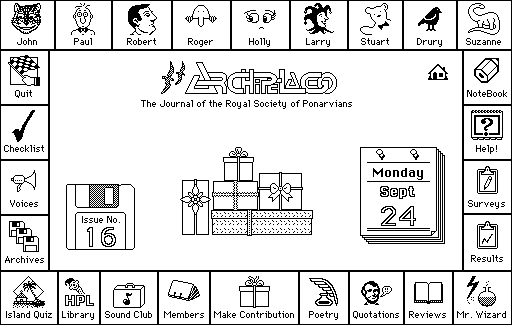 It soon became clear, though, that the members of Archipelago preferred to spend most of their time using just one of these features, a new way of communicating called "voice cards". Voice cards allowed members to engage in conversation by posting questions or remarks on "cards" automatically stamped with the current date and their icon in the corner; the card could even be read aloud by robotic voice - hence the name "voice card".
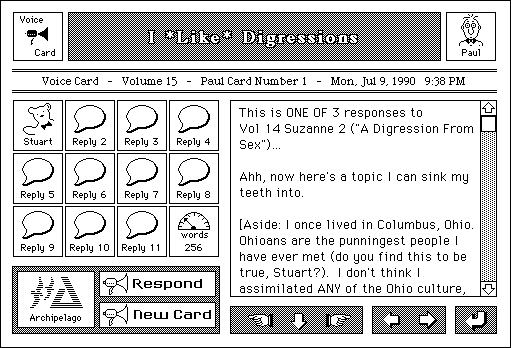 In each new volume these cards were assembled into a "stack", with each member's cards gathered together and preceded by an introductory "hello card"; members could then read through them and reply to any card by clicking a button. The next time around a new volume would be released containing all the replies and new cards, and the previous volume would be re-released with iconic link buttons added to any card that had generated one or more replies. In this way a collection of "voice volumes" built up like links in a chain, each volume connected by many buttons to the volume before it and the volume which came after. Eventually I pared away most of the system and rebuilt it around just the voice cards. Over time the members suggested new features and helped me identify and remove the bugs and rough spots. Occasionally we would discuss whether or not we should "modernize" Archipelago by replacing the gentle ebb and flow of the postal system with a modem-based bulletin board. Such questions forced me to re-examine why I created Archipelago in the first place. The following comments, from a card written in 1990, sum up nicely what I wanted out of Archipelago and what made it different from other ways of communicating.
Over the years that followed, as I upgraded from one machine to another, I was always careful to preserve copies of the original Hypercard stacks. Hypercard itself faded from the scene and no longer runs on a Mac. As I write this in 2013, I can still open voice cards by running a 90's era Mac operating system on a virtual machine, but someday even this may not work. It became apparent that unless I did something to preserve it, our extraordinary seven year conversation would be lost forever. Converting nearly 3000 voice cards from Hypercard to HTML web pages was not easy. In 2006 I developed a complex page design, a cross between the original voice cards and Cartania-style web pages, and created over 200 graphics. I then wrote an ingenious (if I do say so myself) HyperCard program that could read in the original cards and spit out HTML versions of each one. I then had to inspect and edit each card and make adjustments to the program to adapt to the way the original Hypercard code evolved over time. All of this consumed about a year of stolen moments. The end result, which I now present as a province of Cartania, is both a time capsule and a cabinet of wonders. The text is reproduced as it was originally written, with only light editing here and there to preserve a degree of anonymity. Those patient enough to browse through it will find many delightful surprises and small masterpieces - along with an intimate glimpse into the personal lives and dreams of a remarkable group of friends. Behold, then, this unusual record of life as it was at the very dawn of the Internet Age. Welcome to Archipelago. |
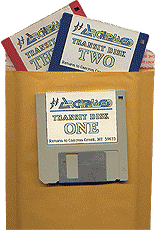
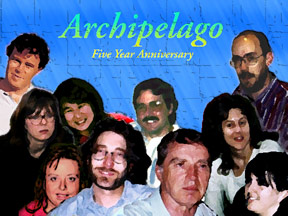 The members of Archipelago included writers, artists, teachers, a poet, a philosopher, a veterinarian,
a retired engineer, and some computer geeks. Ages ranged from 20s to 60s and at times fully
half the members were female (unusual demographics for a computer-centric venture at that time).
Most were friends of mine I had collected over the years; they knew me but not each other.
But over the seven years that followed, they shared the most intimate details of their lives
and became a true community.
The members of Archipelago included writers, artists, teachers, a poet, a philosopher, a veterinarian,
a retired engineer, and some computer geeks. Ages ranged from 20s to 60s and at times fully
half the members were female (unusual demographics for a computer-centric venture at that time).
Most were friends of mine I had collected over the years; they knew me but not each other.
But over the seven years that followed, they shared the most intimate details of their lives
and became a true community.